Gea Elika's Blog, page 145
June 21, 2017
Koreatown: Come Taste and Experience One of Manhattan’s Amazing Cultural Microcosms


Tucked away in Midtown Manhattan is Koreatown, a microcosm bursting with the vivacity of a culture that originated on the other side of the world. Koreatown consists of a few blocks but contains many iconic aspects of Korean daily life. Here you can sample Korean barbecue, sing at a karaoke bar, relax at a spa, try Korean desserts, and have a boutique shopping experience.
 Image by Adam Conolly /Flickr
Image by Adam Conolly /Flickr
Korean Barbecue
One of the most iconic and well-known features of Korean culture is its incredible food. Korean barbecue has become the unequivocal favorite among Americans, with the national dish bulgogi being the most popular. One of the most highly-rated Korean barbecue restaurants in Manhattan is the Kang Ho Dong Baekjeong, where you can have tender, marinated meats cooked fresh right before your eyes. You can also feast on banchan, succulent little side dishes that diversify your palate.
 Image by Adam Kuban / Flickr
Image by Adam Kuban / Flickr
Health & Beauty
Health and Skincare are a big part of Korean culture, and you can experience the best of this lifestyle by pampering yourself in a traditional Korean spa. Though these treatments are considered luxuries by many Americans, most Koreans integrate them into their normal beauty and wellness regimen. Beauty and wellness are two cornerstones of the Korean culture and are highly valued and pursued.
Consider getting the deluxe experience by scheduling a massage and facial, after taking a bath and using the sauna. Premier 57, which will reopen in April 2017, is where you can spend the entire day bathing, relaxing, eating, and enjoying beauty treatments.
If joining a communal bath is outside of your comfort zone, you can opt for a massage spa like Yakson House, where you can get facials, massages, and other beauty treatments to brighten your skin and leave you feeling revitalized.
Karaoke, aka the Noraebang: Let your stress go, the Korean way!
In America, we usually restrict singing to the shower or when we are in our cars with the windows rolled up. Koreans, however, have fully embraced the stress-relieving power of becoming your own superstar in the noraebang, or karaoke room. Here you can grab a few friends, rent a private karaoke room, and sing to your heart’s content.
Koreans like to go out to karaoke rooms anytime they need to let off some steam. It is also customary for coworkers to go out and socialize after work, and the noraebang is the perfect place to let loose and see the fun side of one’s cohorts.
This entertainment comes with outstanding service as well. A host or hostess will take and deliver your drink and food orders, as you and your friends select songs and sing your favorite tunes. In Manhattan, try out Karaoke City, which is both a sports bar and a Karaoke lounge.
Come See for Yourself!
Koreatown offers much more, and only being there in person will give you the complete experience. You will discover incredible aspects of the Korean culture and develop a deeper appreciation for America’s melting pot.
The post Koreatown: Come Taste and Experience One of Manhattan’s Amazing Cultural Microcosms appeared first on - Elika Real Estate.
June 20, 2017
Look Up! How to Unlock the Storage Potential of Your Walls and Ceilings

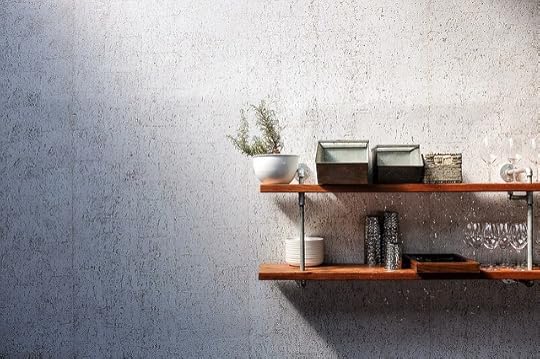
The average size of a New York apartment has been shrinking in the 21st century, with budget-conscious tenants preferring savings and simplicity over square footage. Today the average one bedroom, 750 square foot apartment in Manhattan can easily cost $3,000+ a month, while its 550 square foot counterpart goes for a cool $2,300+.
Professionals residing in these micro spaces already have the challenge of giving away possessions that create clutter and make the space inefficient. Even when taking this measure, closets and cabinets fill up pretty quickly. Residents then find themselves in need of storage for daily essentials like cooking utensils, electronics, and cleaning supplies.
If there is no storage space left in closets or cabinets, where can you go to find extra space? The solution is to look up and unlock the storage potential of your walls and ceilings.

Image by Frédéric Poirot / Flickr
The Kitchen
Clutter can accumulate quickly in your kitchen, and since cooking is central to everyday life, you need efficient space. Some solutions you can employ to optimize kitchen storage space are:
– Wall Hooks – A wall hook rack can easily double as an extra shelf to hang pots and pans while providing an extra shelf to store key items like spices, dish towels, or whatever suits your habits. This bookshelf wall rack is one example of a way to get your wall to store items in your tiny kitchen.
– Ceiling Rack – If your kitchen has a layout where this ceiling rack by VDOMUS can be installed, you can use the area above your head as a storage solution.
The Living Room
– Cube Storage – This unequivocal favorite in storage solutions comes first on the list. Cube storage can be as tall as you like, giving you ample space to store all of your essentials. Everything can be tucked away in a clean fashion in bins, while some cubes can be left bare to act as miniature bookshelves.
– Floating Wall Shelves – These handy shelves attach to your walls and are a spin on the wall shelves in your kitchen. An interesting example is these natural wooden shelves from World Market.
The Bedroom
– Armoire – It is very likely that your closet will not be big enough for your clothing and accessories. Finding a slim, space-conscious armoire like this one can ease the space strain in your bedroom and help organize your personal items.
– Ceiling mounted shelf – When your walls and closets are stretched to the utmost capacity, remember the ceiling! This mounted shelf by Hyloft attaches to your ceiling, giving you added space to store essentials.
Unlock the Potential
With apartments renting at a premium, making the most of every square inch of your home is key to living without clutter and making life efficient. When traditional storage options are maxed out, look to your walls and ceilings to provide the extra room you need to keep all your necessary items organized and accessible.
The post Look Up! How to Unlock the Storage Potential of Your Walls and Ceilings appeared first on - Elika Real Estate.
June 19, 2017
242 Broome
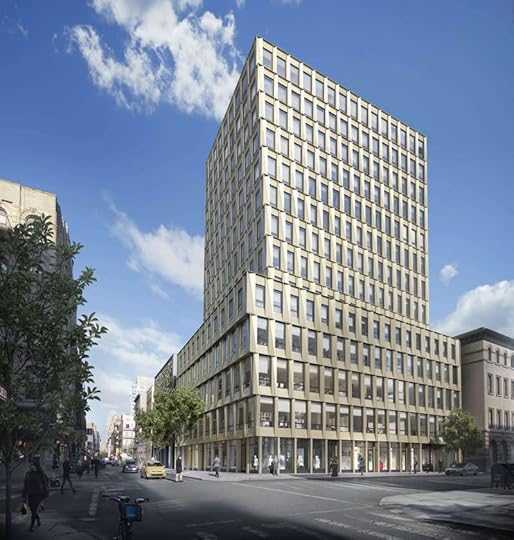
242 Broome is the Lower East Side, re-envisioned. Developed by Delancey Associates and backed by some of the biggest financiers in the city, including Goldman Sachs and BFC Partners, it’s a condominium like no other. No expense has been spared by the architecture or design teams, and the final result reflects this keen attention to detail and love for the finer things. Find your urban oasis at 242 Broome.
 Rendering Courtesy of (242 Broome)
Rendering Courtesy of (242 Broome)
Architecture
A joint project by SHoP Architects, SLCE Architects, and DXA Studio, 242 Broome stands to be one of the most sought after residences in the city.
The building pays homage to the Lower East Side’s industrial past with big windows and soaring ceilings. Designed to capture every ounce of light and openness possible, the higher floors appear to twist west to capture the setting sun (not to mention dramatic vistas). SHoP offsets this design with champagne-coloured anodized aluminum panels to ensure a refined modern look that still fits the profile of the neighborhood.
Topping out at 14 stories, 242 promises to be a stunning addition to the L.E.S. skyline.
Residences

Rendering Courtesy of (242 Broome)
Each of the 55 residences is an open-plan design with soaring 10-foot ceilings.
They have all been finished with the utmost detail by DXA Studios, using classic materials in a modern way for a sleek look that is sure to stand the test of time. Driven by the large windows and excess natural light present throughout the building, the detailing is refined and elegant, stripped back to basics to let the natural materials shine.

Rendering Courtesy of (242 Broome)
Kitchens are finished with Calacatta marble counters and slab marble backsplashes and a full suite of Gaggenau appliances. Also, every unit coming with wide planked white oak floors throughout. Walnut and marble continue through the bathrooms with floating walnut vanities and marble tiled floors and walls. Underfloor heating provides comfort on even the coldest mornings, and the large glassed-in showers and free-standing tubs provide a quiet haven to unwind from the day.

Rendering Courtesy of (242 Broome)
Every bathroom and kitchen are finished with Dornbracht fixtures for an opulent finish that ties together the otherwise restrained room.
Penthouse residents can also look forward to a variety of unique luxuries, including glorious skylights, private rooftop decks, and fully functional fireplaces.
Amenities
The amenities at 242 Broome follow the same high-quality materials and design as the units themselves. The experience starts the moment they want through the private blackened steel door into the private lobby with polished concrete floors, reminiscent of the galleries that dot the Lower East Side.
Blackened steel continues into the common spaces, which includes a fitness center, entertainment lounge (complete with a kitchen and a pool table), children’s playroom, and beautiful rooftop patio furnished with outdoor BBQs.
The lobby is staffed 24/7, and there are additional storage facilities on hand.
Availability
Of the 55 units in the building, there are currently eight units available, ranging from $2.5 million up to $6.25 million for a penthouse apartment.
2-bed, 2-bath units start at $2.5 million for a unit on the eighth floor covering just over 1,200 square feet. The unit includes a master bed with an attached master bathroom, dining/living/kitchen great room, and a second bath with a water closet on suite.
2-bedroom units cap at $2.9 million for a 1,500 square foot corner condo on the ninth floor, including 2.5 baths and with both south and west-facing exposures.
The 3-bed, 3.5-bath unit available for $3.925 million is also a corner unit with south and west exposures, with the square footage bumped up to 1,600 square feet and located on the 12th floor.
Finally, there is a single penthouse unit available for $6.25 million. It’s a 3-bed, 3.5-bath, 2,100 square foot unit with a private upstairs rooftop patio adding 1,000 square feet of living space.
Neighbourhood
The Lower East Side has a long history as an artist sanctuary, and today is a hotbed of culture. 242 Broome itself has a major cultural institution going in on the first floor to promote and celebrate this cultural heritage. Other recent developments include the construction of the Market Line, the largest open marketplace in the world. A mix of artisan shops and green spaces, it’s going to attract everything from boutique cafes to unique fashion lines, to the generation of up-and-coming artists.
Elsewhere, the L.E.S. is a vibrant and connected part of the city. Countless museums and galleries are in the neighborhood, high-end restaurants, and hole-in-the-wall eateries, and endless boutiques make the L.E.S. a joy to explore. What’s more, with rapid and easy transit to other parts of the city, you’re never far from your next urban discovery.
For a beautiful condo in the next big thing in NYC development
[ 242 Broome ]
The post 242 Broome appeared first on - Elika Real Estate.
June 15, 2017
5 Water Saving Tips For Your NYC Apartment

Clean water is in limited supply, especially in the summer. To save some of this precious resource, use it wisely and equip your apartment with some water-saving upgrades.
As of January 2017, single family homeowners paid an average of $1,000 annually for their water, while apartment dwellers shelled out a steep $700 per year. How can you conserve water to reduce these expenses?

Image by atr_Fireheart /Flickr
1. Check Your Toilet
According to the Grace Communications Foundation, toilets typically use the most water in a residence. In fact, your daily flushes make up for roughly 28 percent of your total water usage. Did you know that older toilets (those made before 1995) can use between 3 and 7 gallons per flush? Upgrading to a modern and eco-friendly toilet can reduce the gallons per flush to a figure as low as 1.28.
If you can’t switch out the toilet, installing a tank bank or float booster can save you up to 10 gallons a day. You can also place a heavy object like a large rock into your tank to take the place of some water.
2. Do Full Loads of Laundry
If you have a washer and dryer in your unit, be aware that on average, laundry makes up 22 percent of your total water usage. To minimize wasted water, consider running only full loads and/or upgrading to an Energy Star washer. These washers use 25 percent less energy, and they also use 45 percent less water per load.
3. Change Your Shower Routine
For most households, showering is the third greatest water expense, hovering around 19 percent of your bill. Here are some quick shower facts. The average shower lasts around 8 minutes. Also, the typical shower head has a water flow rate of 2.1 gallons per minute, resulting in 17.2 gallons used in the average shower.
If you start adopting water-friendly shower habits, you can save on your bill. For example, by turning off your water when shampooing, shaving, or using conditioner, you can reduce a few gallons during your shower. If you prefer a continual water flow, consider setting a timer to limit your showers to 5 minutes or less.
There are also gadgets that can help you save money during a shower. WaterSense® showerheads can be found at any local hardware or home improvement store. Using higher pressure to reduce the water flow rate, these eco-friendly showerheads can save you up to 2,900 gallons a year.
4. Check For Leaks
When your bills are still mysteriously high even after making water-conscious decisions, check for leaks. Leaky pipes are sneaky money pits that make up for a whopping 14 percent of your water bill when left unaddressed.
5. Limit Unnecessary Water Flow
You’d be surprised how often you leave the water running when you don’t really need it. When brushing your teeth and washing dishes by hand, it’s easy to forget how much is actually going down the drain. When sink usage makes up for 16 percent of your bill, you should try to reduce unnecessary water flow.
Every step you take to be mindful about how you use water in your apartment will take the edge off New York’s high water bills. If everyone does their part to save water this summer, we can do something good for the environment while also saving money.
The post 5 Water Saving Tips For Your NYC Apartment appeared first on - Elika Real Estate.
June 14, 2017
Thank you Mark L for your 5 Star Yelp Review

Thank you for your kind review, Mark. It was my pleasure being of service. It takes the right buyers agent to understand your needs. Whether you are a looking for a home or investment property contact Elika to buy the right home for the right price.
Read Mark L.‘s review of Elika Real Estate on Yelp
The post Thank you Mark L for your 5 Star Yelp Review appeared first on - Elika Real Estate.
What’s In and What’s Out in 2017 for Interior Design
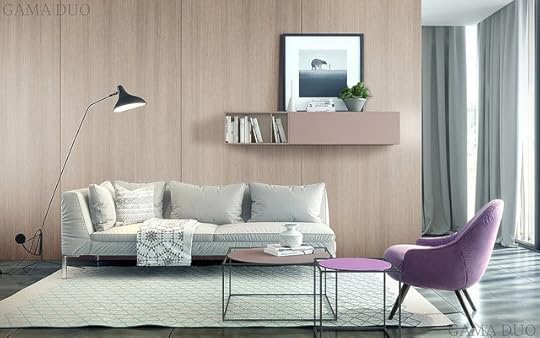
Industrial’s out. Nature’s in. In 2017, interior spaces are reflecting individuality, with clean and intentional palettes.
What’s out: Stainless Steel Everything
What’s in: Warm Metals and Organic Materials
It doesn’t take long after browsing today’s hottest interior design trends to see that the cold and clinical stainless steel of last decade is continually phasing out. Stylish interiors are signaling a common longing for nature, incorporating warmer metals and natural materials into the room design.
In 2017, we are seeing gold, bronze, and brass make a comeback in everything from door handles to kitchen design. These warm metals create a calming and earthy environment. In particularly chic kitchens, terracotta backsplashes and tiles are being installed and stainless steel appliances are being traded for matte appliances.
What’s out: Oversized Furniture
What’s in: Functional Furniture

Image by Weston Premium Woods /Flickr
The massive bean bags and cuddle couches of the 2000s are steadily losing popularity as new minimalist and micro-unit trends emerge. Today, you’ll see an increased demand for practical and efficient furniture that has multiple functions.
Storage ottomans, convertible sofas, and surfaces that are integrated with charging ports are taking the place of one-dimensional furniture. Both homeowners and rentals are clearly favoring flexibility over bulk, as huge sectionals are continually passed over for lighter living room sets that allow for easier and more custom furniture arrangements.
What’s out: Just Neutrals
What’s in: Surprise Pop Colors
While simple interiors are still on trend, an entirely neutral palette is no longer the gold standard. As residents yearn to express more of their personality, fun pop colors are making their way into homes. Hues from nature like violet and green are especially popular.
Designers are finding that a perfect cerulean accent ottoman can become the focal point of a guestroom. Pop-color throw pillows are another piece that adds a splash of color to the room. You can also see boldly patterned side chairs or geometric wallpaper offsetting solid-colored furniture, adding a sense of surprise to a space that was once monotone.
What’s out: Just Vintage
What’s in: Something Old, Something New
The large “strictly vintage” trend is fading. Today’s designers need to integrate technology into interior spaces. The need for more efficient furniture is calling designers to limit the use of vintage furniture. The designs of yesteryear are grand and still incredibly beautiful, but there is no longer a strong pull to decorate entirely with vintage memorabilia.
That’s not to say stylish rooms cannot include furniture that looks vintage. Try adding a piece that channels classic style but still has contemporary functionality. Cane furniture’s rising popularity is one example of vintage inspiration breathing new life into modern furniture.
The Takeaway
The ongoing thread through 2017’s design trends is there’s room to innovate with exciting patterns and colors as long as the overall design doesn’t become too busy. New materials that are organic and warmer in tone are making interiors softer and more inviting, compared with the neutral colors and stainless steel of the 2000s.
The post What’s In and What’s Out in 2017 for Interior Design appeared first on - Elika Real Estate.
June 9, 2017
5 Renovations that can Boost Your NYC Property Value
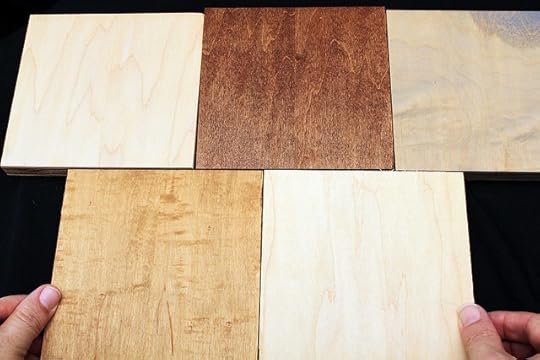
There’s no universal formula for raising a property’s value. However, there are a few popular renovations that are known to increase your chances of appraising higher.
When you want to increase your property value in New York, you need to know what New Yorkers want. Apartments that are efficient, attractive, and equipped with modern conveniences are highly desirable. Therefore, your property should be equipped with the best updates and renovations to appeal to the current market.
1. Give Your Kitchen a Remodel
In every renovation, consider your ROI, or return on investment. If the money you’re putting into the project won’t match the money or benefits you’ll receive, it’s time to go back to the drawing board.
In the case of kitchens, Bankrate warns that major kitchen remodels typically have a poorer ROI, whereas minor remodels give your kitchen a value increase without spending an inordinate sum.
A minor remodel involves non-invasive external changes like replacing cabinets, countertops, and appliances. Since apartments usually have smaller kitchens, adding something as simple as a new backsplash can add charm at a reasonable cost.
2. Old Carpet? It’s Time to Make a Switch
New floors are always welcome. If your property is a condo or coop apartment on a higher floor, switching to sound-absorbing cork floors can be beneficial to you and potential tenants. Hardwood floors are always a classic choice that is broadly appreciated, and most preferred can spruce up your interior.

Image Christopher / Flickr
3. Do a Minor Bathroom Remodel
According to Kiplinger, adding minor updates to a bathroom can give you a pleasant 172 percent return on your investment. Consider switching out an older toilet for a modern dual-flush model that can conserve water and revamp your bathroom’s outdated appearance.
Installing a new vanity cabinet, sink, and countertop will also create a sleek look that’s attractive as well as functional. It’s amazing how just a few changes can help you make the most of your bathroom’s space. Try adding a vanity cabinet with efficient storage solutions to optimize even smaller apartment bathrooms.
4. Upgrade Your Front Door
If your front door has seen better days, replacing it with a new door made of steel or fiberglass is a good idea. Not only is this remodel affordable, but it also adds security to your apartment or condo. Most fiberglass and steel doors are Energy Star certified as well, giving you additional savings on your utilities.
5. Add Trim and Paint
One way to instantly beautify your apartment’s interior, and add value, is to apply a fresh coat of paint. New colors that are on trend and harmonize with the rest of the property will make it more appealing to the market.
Adding crown moldings can also make an apartment look more refined and spruce up any plain interior. Since this update is a relatively inexpensive project, it’s an excellent renovation to add to your list.
Maximize the Value of Your Property
Increasing your property’s value depends on knowing the heartbeat of New Yorkers. By adding highly functional and updated interiors
The post 5 Renovations that can Boost Your NYC Property Value appeared first on - Elika Real Estate.
June 7, 2017
Getting Through the Mortgage Pre-approval Process
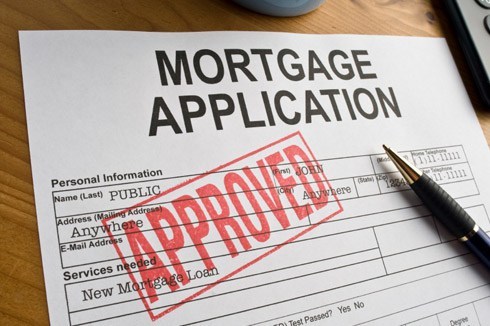
There are several reasons you should receive pre-approval for your mortgage before shopping for a home. This allows you to know exactly how much you can borrow and makes you more appealing to sellers, who do not have to worry if you are going to get a mortgage in the current competitive New York housing market. Additionally, submitting an offer without pre-approval if you are financing the deal is essentially submitting a blank offer that will not be taken seriously. In a competitive situation, this could mean losing the apartment.
With low-interest rates and the housing market on strong footing, if you do not have a pre-approval letter, the listing agent and seller do not want to speak to you, according to Grace Bozick, VP, Wealth Management Lending Officer, at Bank of America. You need your “ducks in a row,” Bozick said.
Sellers want to take the mortgage contingency out as a condition to closing. We highly advise against this unless you can provide for a larger down payment or pay for the apartment in cash. However, if you feel you must do so to try to win a bidding war, there is no option without pre-approval.
This means the buyer may be on the hook to pay cash if they cannot get a mortgage. If you are pre-approved, this eliminates the risk you won’t obtain a mortgage, Bozick stated.
 Image by Whitney Bennett / Flickr
Image by Whitney Bennett / Flickr
Pre-qualification is less formal, with the lender using information from the buyer to determine the amount of mortgage you qualify for, without verifying it. Pre-approval is a step further, with the lender checking various items such as your credit score, pay stubs, tax returns, bank statements, and brokerage statements.
We go through the application in order to make your life easier and smooth the process.
Uniform Residential Loan Application
The Uniform Residential Loan Application, also called Form 1003, is a four-page document. This is the standard form used by virtually all mortgage lenders, so gaining familiarity with the required information is important.
While the form is short, it includes all the information necessary for the lender to determine whether to extend the loan. There are 10 sections, but you do not need to complete all of them at this stage since you are merely finding out how much you can borrow.
Starting off easy
The first section pertains to the type of mortgage and terms. Since you are not applying for the loan at this time, you can skip this part.
Similarly, you do not need to fill out most of Section II, titled Property Information and Purpose of Loan. Most of the information, such as the property address and whether the loan is for a purchase/refinance are not available at this early juncture. However, there are two pieces of information that lenders are interested in at this point. The names the title will be held in and the source of the down payment.
The title question is not as straightforward as it seems. If you are buying the property alone and the title is in your name, this is simple. If you are married, you can put both of your names. Should one of you pass away, the property goes to the other party. However, if one party has poor credit, or there is a complicated family history, you should think about how the title will be held.
Lenders want to know how you are funding the down payment. If it is from your own savings, this is straightforward. However, if you are getting the money from a different source, lenders want to know for a variety of reasons. For instance, a gift from a family member is fine, but from others, it may present a problem. If someone is extending a loan to you, lenders want to account for your increased debt.
The third section has to be filled out, but this is basic information on you and a co-borrower (if there is one). This includes your name, social security (this is one instance where it is not only okay to provide it, but it is a necessity), marital status, dependents, and your current address. If you have been at your present residence for less than two years, your previous address is also required. The same information is required for a co-borrower, whose income, assets/liabilities, and credit history are also used to determine whether a mortgage will be extended. This is different from a co-signer, who can help you obtain a mortgage, but does not have the same rights, although he/she is on the hook if you cannot make the mortgage payments.

Image by Lori Hiscock / Flickr
The nitty-gritty
Care should be taken filling out the next three sections, IV-VI. These relate to your employment information, income/expenses, and assets/liabilities.
Section IV is asking you to put down your employment history (along with the co-borrower), going back at least two years. This asks for the employer’s name/address, years on the job and in the line of work, your title, the type of business, and phone number. If you are self-employed, there is a box for you to check.
You need to fill out the same information for prior employers if you have been at your current job for less than two years, along with your monthly income.
The next section outlines your monthly income and housing expenses. If you are a salaried employee, this is straight forward. Make sure to include your entire compensation, including bonuses and commissions. For those that are self-employed, make it as accurate as you can. Investment income, such as dividends and interest are also needed. If you own property and receive rental income, report the net amount.
The section includes a space for housing expenses. There are two columns: present and proposed. If you are renting, put down the amount you pay, along with any renters insurance. But, if you own your current apartment, your mortgage, insurance, taxes, and other amounts, such as maintenance, are entered. It is a little trickier, but the form also asks for your proposed housing expenses. You can ballpark these based on your budget.
Next, the form asks for your assets and liabilities. For your assets, you need checking/savings accounts (bank names, account numbers, and approximate balances), securities such as stock and bonds, other real estate owned, retirement funds, and any other assets. If you own real estate, you are expected to put in details for each one, such as the address, market value, amount of mortgage, along with the gross rental income, mortgage payment, and insurance/maintenance/taxes to calculate the net rental income
Some banks might have you skip the liability section, preferring to obtain this later when the lender pulls your credit report. You should know your situation for your knowledge, however.
Almost home free
You should be able to fill out the last few sections fairly quickly. Section VII, Details Of Transaction, can be skipped since these are not available.
Section VIII are a series of five yes/no questions such as if there are any outstanding judgments, declared bankruptcy and if you are a party to a lawsuit.
The last two sections require you to read and sign. You agree that the information is accurate and acknowledge that the lender may verify it. The last section, which is voluntary, asks you to provide information on your ethnicity, race, and sex. If you choose not to provide it, there is a box for you to check.
Final thoughts
The application can be filled out and sent back via e-mail or fax. There is likely an option to do it online, too. The pre-approval process does not take long, and you should get a letter in one to two days, Bozick stated. If there are any issues, the banker might need to ask for additional documents, she continued.
It behooves you to fill out the information accurately. The information is going to be verified, and any inconsistencies are going to delay your loan approval.
Once you have found an apartment you would like to bid on, you should also keep in mind that the bank needs to approve the building. The lender will look at things such as the building’s financials, vacancy rate, the split between rentals and owner-occupied units, and the amount of commercial space Bozick said. For a co-op, you need to pass muster with the board, which can be strict, Bozick added.
1003 Application Sample
The post Getting Through the Mortgage Pre-approval Process appeared first on - Elika Real Estate.
June 5, 2017
How to Find the Right Homeowners Insurance

When the free market is flooded with homeowners insurance companies vying for your business, how do you choose? Overall, seek out providers that offer both integrity and affordability.
What Should You Look for in NYC Homeowners Insurance?
New Yorkers face the problem of annual homeowners insurance premiums that are over $100 the national average of $1,034. This means that New Yorkers have to pay more than the rest of the nation’s homeowners for the same amount of coverage. Thankfully, by exploring your options and taking all the necessary precautions, you can still have excellent protection for your home without sacrificing too much of your hard-earned money.

Image by Pictures of Money / Flickr
Integrity
Choose a Provider That’s Upfront with Costs and Coverage.
Insurance providers vary in their levels of price and coverage transparency. As a homeowner, you need to find a company that’s 100 percent open about what you’ll pay and very specific about what you’re getting for your money. Be sure to explore the fine print. If you see too many odd “exceptions” to your coverage, ask questions, but it’s probably smart to keep on shopping.
Find One That Recommends Only What You Need.
An insurer that pushes you to pay for add-ons like earthquake coverage, when the risks for tremors in NYC are relatively low, probably isn’t a good choice. Instead, you want a provider to offer useful additions like flood insurance. Since rising waters do pose problems for homes on Long Island, investing in this kind of add-on to your plan could actually keep you out of some future trouble.
Affordability
Look for a Provider That Offers Discounts.
If you have multiple insurance needs, you should explore the option of covering everything with one provider. Insurance companies that offer life, auto, boat, and home insurance into bundle discount packages can take some of the sting off your finances. Plus, lower prices mean you can get good coverage for lower rates.
You will also want to find a provider who offers better premiums when you lower the risk factors in your home. A good insurance company will also give discounts for new homes, new customers, and retirees. When a company offers good incentives, you know they value your patronage.
A Good Provider Will Charge You Based on Your Home’s True Value.
You don’t want to pay for coverage for a million-dollar home when your dwelling is actually worth $700,000. Since your home’s cost of replacement plays a big role in the size of your premium, getting an accurate appraisal is key.
Don’t let an insurance provider’s assessment be the final say. Instead, get a home builder or appraiser to offer a second opinion. With third-party help, you can often get more accurate assessments that grant you a more honest premium. If your company won’t be open to assessments from other professionals, it’s time to keep on shopping.
You don’t have to skimp on coverage to afford homeownership in New York. Instead, take your time when looking for homeowners insurance and do business with an honest and fair provider.
The post How to Find the Right Homeowners Insurance appeared first on - Elika Real Estate.
May 31, 2017
How Can I Fix My Credit to Qualify for a Mortgage?
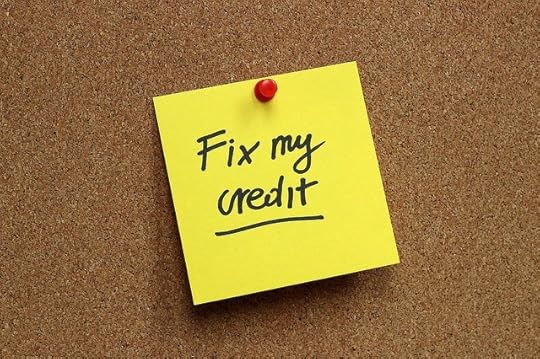
So, your credit has seen better days. Good news—it’s not the end of the world. While you may need to jump through hoops to even rent an apartment right now, you can bring your credit score up to eventually qualify for home-ownership. Start working on fixing your credit today.
 Image by CafeCredit.com
Image by CafeCredit.com
When Your Credit Needs an Intervention
If you’re looking to buy a home in the future, fixing your credit score is vital. The recession of the late 00’s is still fresh in the minds of lenders, making home loan qualification regulations tight. For example, these days, you’ll need at least a 580 even to be considered for an FHA home loan.
The great thing about FICO scores is that they only go up and down according to an algorithm. These numbers aren’t biased. They don’t care who you are or where you come from. They only rate your financial capacity based on what you do. So, what can you do to bring up your credit score for home ownership?
1. Create a Good Payment History
Did you know that your payment history makes up roughly 35 percent of your credit score? Unpaid bills like past-due car payments are often submitted to credit reporting agencies. If you have anything like this on your record, you’ll need to remove it and replace it with a squeaky-clean record of fully paid bills.
Having no credit can be just as bad as having a low FICO score. With no history to go by, lenders may also be wary of trusting you with a home loan. If you have no credit, start making a paper trail for a good payment history, like taking over a phone bill. This will help set the foundation for a good score in the future.
2. Keep Your Balances Low
Not only should you shoot for a good payment history, but you should also keep your credit card balances low. Just because you have an $8,000 limit on your Visa card, it doesn’t mean it’s okay to make large purchases you can’t pay off on time. Credit reporting agencies see this kind of behavior as risky, which can lower your FICO score.
3. Remove Bad Credit Reports
Never underestimate the power of negotiation. Creditors don’t like unpaid bills just as much as you don’t like being bothered about them. When you call and present a “pay for delete offer,” you have a chance to get your bad behavior removed after you pay off the debt. Many creditors will be happy remove your nonpayment records in exchange for receiving the full payments. If you’re short on cash, negotiating installment payments over time is also often doable.
On a side note, you might have inaccurate bad reports. In this case, file a dispute letter to get the record removed.
Get to Work
A good credit score paves the way to a bright future of home-ownership. By taking these steps as soon as possible, you are likely to see improvements in your credit score.
The post How Can I Fix My Credit to Qualify for a Mortgage? appeared first on - Elika Real Estate.



